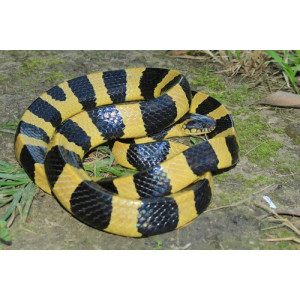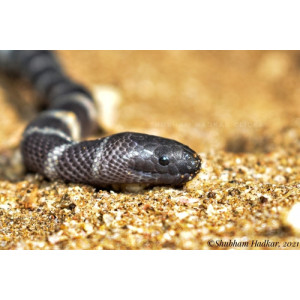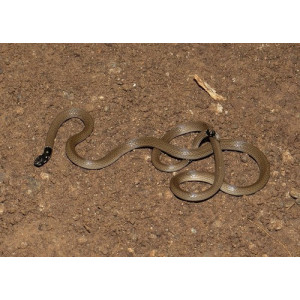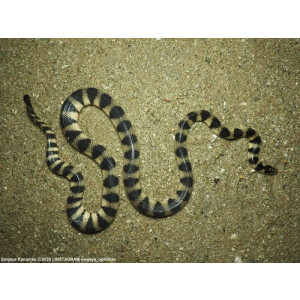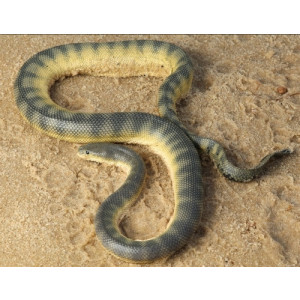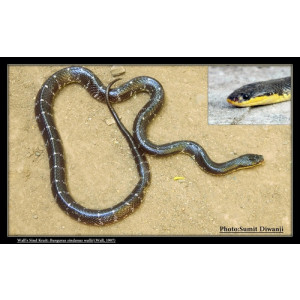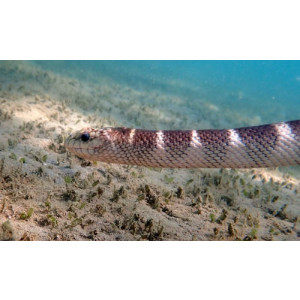King Cobra Did you see this animal?
Scientific Name : Ophiophagus hannah
Family : Elapidae
Order : Squamata
Class : Reptilia
Phylum : Chordata
Habitat : Forests,Streams,Agricultural fields
Description : King cobra is a venomous snake in the world, with an average length of 3.18 to 4 meters (10.4 to 13.1 feet) and a maximum recorded length of 5.85 meters (19.2 feet).[2] The color of this species varies depending on its habitat, ranging from black with white stripes to a solid brownish-grey. The king cobra uses its forked tongue to sense prey by picking up scent particles and gauging their location. It can sense movement up to 100 meters away and swallows its prey whole due to its flexible jaws. It hunts during the day but has been observed at night on rare occasions. As an apex predator, the king cobra dominates all other snakes except for large pythons. Its primary diet consists of snakes and lizards, including Indian cobras, banded kraits, rat snakes, pythons, and various others. It even tracks and preys on venomous snakes like the Malabar pit viper and hump-nosed pit viper by following their scent trails. If food is scarce, it will resort to feeding on small vertebrates such as birds and lizards. Although it rarely happens, the cobra can also use its muscular body to constrict its prey. After a large meal, its slow metabolic rate allows it to survive for many months without another meal. The king cobra can be easily irritated by closely approaching objects or sudden movements. When raising its body, the king cobra can still move forward to strike with a long distance, and people may misjudge the safe zone. It can deliver multiple bites in a single attack. The female king cobra is pregnant for around 50 to 59 days. It's the only snake that constructs a nest, using dry leaf litter from late March to late May. The nests are usually at the base of trees, up to 55 cm high in the center, and 140 cm wide at the base, with a single chamber for egg-laying. Clutch size varies from 7 to 43 eggs, which hatch after 66 to 105 days of incubation.
Distribution in Bangladesh
References:
description written by: Zarin Tasnim,Department of Zoology,University of Dhaka ; information source:IUCN Red List Bangladesh-2015,www.reptile-database.reptarium.cz; photo credit:Frank Canon(www.inaturalist.org/people/Frank Canon), photo copyright: iNaturalist. more information please contact with us.
description written by: Zarin Tasnim,Department of Zoology,University of Dhaka ; information source:IUCN Red List Bangladesh-2015,www.reptile-database.reptarium.cz; photo credit:Frank Canon(www.inaturalist.org/people/Frank Canon), photo copyright: iNaturalist. more information please contact with us.

